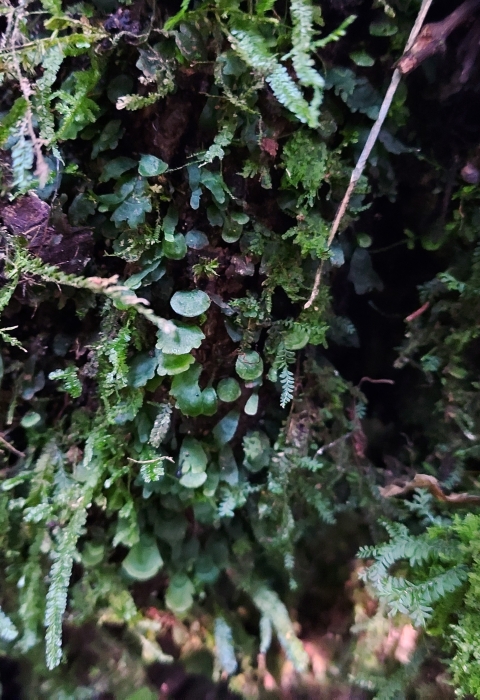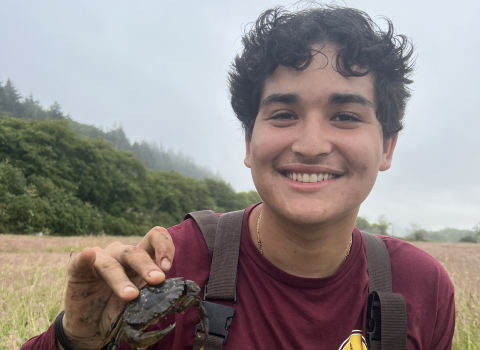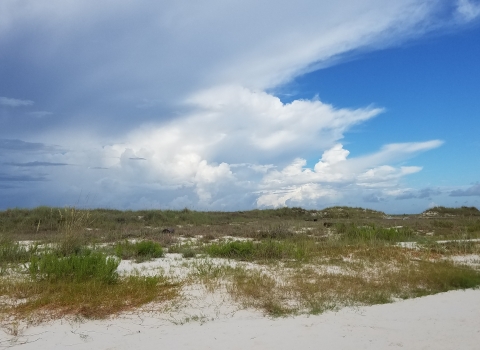Q: How much land is being designated for the Florida bristle fern? When does this take effect?
A: The U.S. Fish and Wildlife Service (Service) is designating approximately 4,195 acres on 10 parcels as critical habitat for the rare Florida bristle fern under the Endangered Species Act (ESA). The rule takes effect 30 days from publication in the Federal Register.
Q: Why is critical habitat being designated for the Florida bristle fern?
A: The ESA requires the Service to designate critical habitat for listed species if prudent and determinable. The plant, found only in Miami-Dade and Sumter Counties, was listed as endangered under the ESA in October 2015.
Q: What is the Florida bristle fern?
A: The Florida bristle fern is a tiny bright green mat-forming plant. In Miami-Dade County, south Florida, four populations of the fern are found in rockland hammocks on county-managed conservation lands in Castellow, Hattie Bauer, Fuchs and Meissner hammocks. In Sumter County, central Florida, two populations grow in small hammocks on state-owned land in the Jumper Creek Tract of the Withlacoochee State Forest.
Q: Why is the plant endangered?
A: Urban development, agricultural conversion, and building canals and draining the land has modified or destroyed much of the plant’s habitat. The ESA requires, where possible, the Service to identify areas essential to the conservation of endangered or threatened species, which it terms critical habitat.
Q: How was critical habitat determination finalized for the Florida bristle fern?
A: Substantive comments from peer reviewers and the public suggested expanding some of the units and adding parcels to the critical habitat designation during the comment period for the proposed rule in February 2020. Five parcels, Matheson Hammock, Snapper Creek, Castellow and Ross Hammocks, Hattie Bauer Hammock, and Fuchs and Meissner Hammocks, were expanded and one south Florida unit, Charles Deering Estate Hammock, was added. This designation will also help protect very rare habitats – hardwood hammocks and pine rocklands – in central and South Florida, where other rare/endangered species are found and depend upon. View the critical habitat here.
Q: How does a critical habitat designation affect private landowners?
A: Designating critical habitat under the ESA has no impact on individual landowner activities unless they also involve federal agency activities or require federal funding or permits. Additionally, it does not affect land ownership or establish a wildlife refuge, wilderness, reserve, preserve or other conservation areas, nor does it allow the government or public to access private lands.
Q: What does a critical habitat designation mean?
A: Critical habitat is a term under the ESA to refer to specific geographic areas that contain features essential to the conservation of a threatened or endangered species and that may require special management or protection. Critical habitat may include areas that are not currently occupied by the species but are essential for its conservation.
Q: How does the Service determine what areas to designate as critical habitat?
A: Within areas occupied by the species, Service biologists consider physical and biological features that the species needs to survive and reproduce. These features include:
Space for individual and population growth and for normal behavior;
Cover or shelter;
Food, water, air, light, minerals, or other nutritional or physiological requirements; and
Sites for breeding, reproduction, rearing of offspring, germination or seed dispersal.
Unoccupied areas are determined based on documented historical occurrence.
Q: Does a critical habitat designation affect all activities that occur within that area?
A: No. A critical habitat designation does not necessarily restrict activities. It is a reminder to federal agencies that they must make special efforts to protect the important characteristics of designated areas. Activities that involve a federal permit, license, or funding, or engage on-the-ground activities of a federal agency and are likely to destroy or adversely modify the area of critical habitat, are affected. If this is the case, we work through a formal consultation process with the agency and, where appropriate, with private or other landowners to amend their project to allow it to proceed without adversely affecting the critical habitat.
Q: What does the economic analysis mean to private landowners in the area?
A: An economic analysis is comprehensive and considers the costs of designating critical habitat. The economic analysis indicated that this designation won’t have a significant economic impact on a substantial number of small business entities.
Q: Where can I find more information about the Florida bristle fern designated habitat?
A: The rule, comments, economic analysis and supporting documents are available at http://www.regulations.gov, Docket No. FWS–R4–ES–2019–0068. Persons who use a telecommunications device for the deaf (TDD) may call the Federal Relay Service at 800-877–8339. For more information, visit the species profile.




